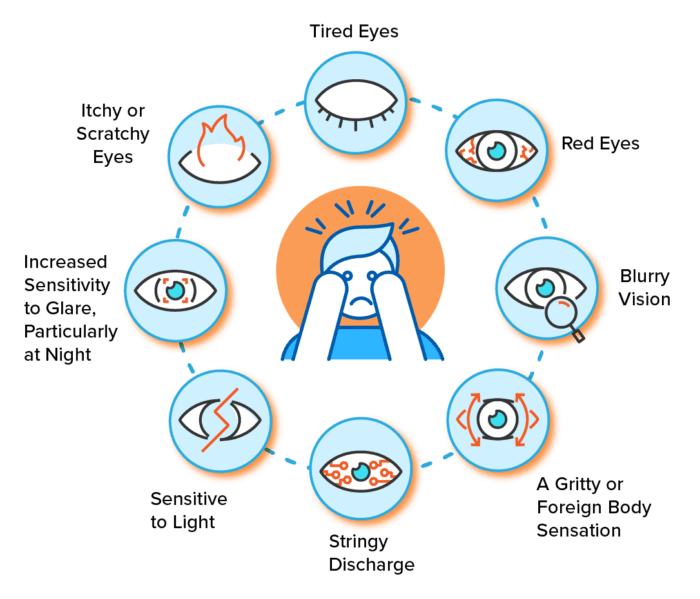What is Dry Eye Disease?
Dry eye disease is multifactorial. Dry eye occurs when your eyes do not produce enough tears or when your eyes do not produce quality tears. Although dry eye disease is categorized into two distinct types, aqueous-deficient and evaporative, many patients have both.
Dry Eye Disease Symptoms & Causes

Causes
- Getting older; tear production tends to diminish as you age, and dry eye disease is more common in people over 50
- Prolonged use of digital devices
- Side effect of many medications, including those for glaucoma, depression, allergies, and high blood pressure
- Immunological conditions, such as rheumatoid arthritis, lupus, and Sjogren’s
Symptoms
- Burning or stinging
- Scratchiness or irritation, like there’s something in your eye
- Redness
- Sensitivity to light
- Blurry vision or vision that fluctuates throughout the day
- Excessive watering of the eyes

